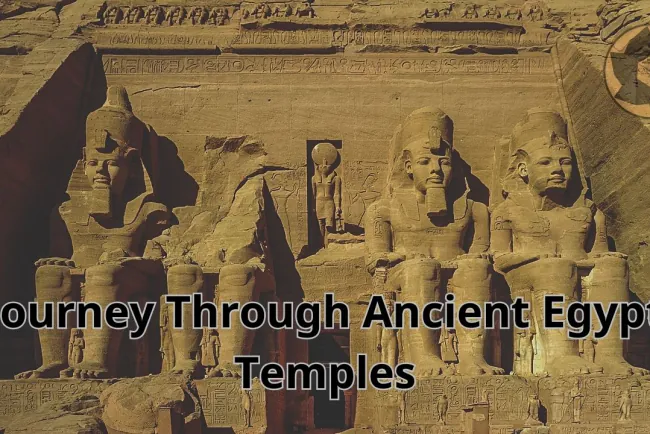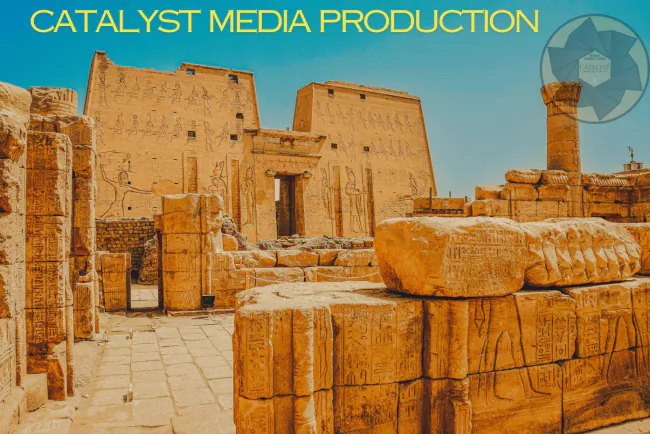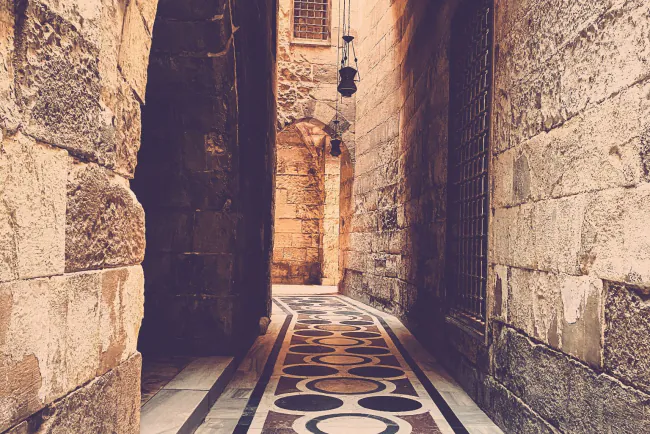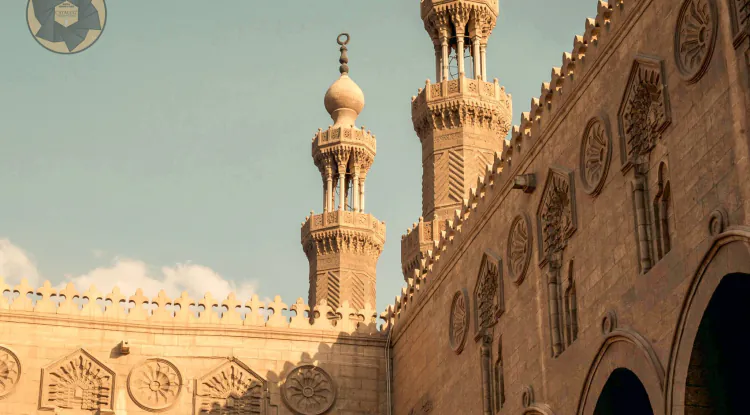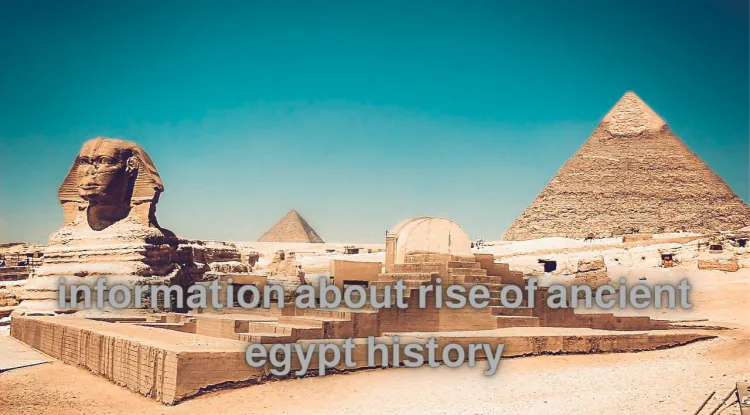The Lighthouse of Alexandria is one of the wonders of the ancient world
The Lighthouse of Alexandria or the Lighthouse of Alexandria on Pharos Island Alexandria is one of the Seven Wonders of the World mentioned by the Greeks. Its location was on the tip of the Pharos Peninsula and is the current location of Qaitbay Citadel in the Egyptian city of Alexandria.

What is the Lighthouse of Alexandria?
Lighthouses are a type known on the Egyptian coasts before the era of Alexander the Great. The Lighthouse of Alexandria is considered one of the Seven Wonders of the Ancient World. It was built by the architect Sostratus of Knidos during the era of King Ptolemy II around 285-246 BC. This architect was generally known as the father of lighthouses, and whether the island gained Its name comes from the lighthouse built on it, or whether the lighthouse gained its name from the island. This is not certain, as the word Pharos is used to refer to the lighthouse in all languages. Lighthouse in Latin means Pharu, in Spanish and Italian it means Faros, and in French it means Phare, and the word Pharos is used a lot in English.
History of the construction of the Lighthouse of Alexandria:
As previously mentioned, the architect and engineer Sostratus built it, and the Ptolemaic king authorized him to engrave his name on this edifice as a form of acknowledgment of favor. He coined a dedication to the gods for those who travel by sea, and with regard to this inscription, historians have confirmed that the engineer Sostratus, who was fully aware of the methods of the rulers. At that time, he feared that they would turn this building into a memorial that was not for him, but for his benefactor, the king. Therefore, as soon as he finished the above-mentioned inscription, he covered it and hid it with a layer of plaster, and on top of it he engraved other phrases praising King Philadelphus, but this plaster part quickly faded due to the influence of sea water, and the original inscription appeared.
The Romans imitated the Lighthouse of Alexandria directly in their lighthouses, such as the Lighthouse of Carthage and Ostia, and in our present days there are still lighthouses similar to the Lighthouse of Alexandria that depend for their lighting on the flames emanating from them, appearing from afar and mistakenly as if they were stars.
Julius Caesar described the city of Alexandria when he captured it at the end of the Ptolemaic era. He said that the Lighthouse of Alexandria is a very high tower and beautifully constructed. This tower stands on the island of Pharos, which is located towards the city of Alexandria and is connected to the shore by a narrow road built in the sea from stones transported from mixed quarries, this road is blocked by a narrow, fortified bridge.
In this regard, we should not miss what was mentioned by Abu Al-Hajjaj Yusuf bin Muhammad Al-Balawi Al-Malaki Al-Andalusi, known as Ibn Al-Sheikh, who lived in the period from 1132-1207 AD, and visited Alexandria in the year 1165-1166 AD, in his book “Al-Faba”, where he described in the second part a detailed description of the Lighthouse of Alexandria.
Despite the research that dealt with the shape of this lighthouse, the study of the scientist Thiersh on this shape is considered one of the most important references due to his study also relying on buildings similar to the shape of the lighthouse, such as the remains of the lighthouse near Abusir in Mariout, which is considered a miniature of the Lighthouse of Alexandria, Although it is much less rich and decorative.
We also find the shape of the lighthouse represented on one of the Roman lanterns displayed in the Roman Museum, in addition to the representation of the lighthouse on many coins dating back to the Roman imperial era, especially coins from the era of Emperor Domitian until the end of the second century AD.
Building materials used in building the lighthouse:
The cost of building the Lighthouse of Alexandria was about 800 talents, which is considered very cheap, as 800 talents is approximately equivalent to about 2000 British pounds in current days. Slaves were used in the process of its construction, and the lighthouse was built from carved stones that were extracted from Mix quarries and jewelry was made for it. It is wonderfully made of alabaster, marble and bronze, and many granite columns were erected in it, specially extracted from Aswan quarries. Traces of these granite columns are still present around Qaitbay Castle at the bottom of the sea.
The sources also indicate the presence of the Temple of Isis on the island of Pharos, where Isis was often represented next to the lighthouse, especially on the coins of the Roman emperors. It is known as Isis Pharia, which indicates that Isis had a temple near the lighthouse. We do not know much about this temple from the Ptolemaic era, especially since the coin Alexandria from the era of Hadrian had a figure of Isis of Pharea minted on top of it. Near the island was found this huge statue of Isis, which is preserved in the Maritime Museum in Alexandria. It is said that the entire building was impervious and solid, meaning that it did not allow water to penetrate and was resistant to the crashing waves of the sea that were breaking on the stone block from which it was built, especially The northern façade of the lighthouse, whose stones are said to have been stuck together not with ordinary mortar, but with molten lead.
Description of the lighthouse:
In the thirteenth century AD, the Arab geographer Al-Idrisi confirmed that the lighthouse was about 600 feet (about 135 meters) high, while other sources confirmed that its height may have reached 590 feet. In general, whatever its height and dimensions, there is no doubt that it was a lofty, miraculous edifice.
First: the external construction:
The lighthouse was built on a wide, square base. The entrance to this lighthouse was from the southern side, and a staircase led to this entrance. The lighthouse was built in the Babylonian style, in the form of eight towers, each on top of the other, each of which was smaller in size than the one below it, which is known as the pyramid system.
The height of the ground floor is about 60 metres, and it is square in shape with many wide, decorated windows and 300 rooms where the machines were placed and the workers resided. This floor ends with a roof on the sides of which are four huge bronze statues representing Triton, son of Neptun, the god of the seas, while the height of the second floor is about It is 30 meters long and octagonal. The third floor is circular in shape and inside the building there is a spiral staircase. This staircase may have been double and in the middle was a crane used to transport fuel to the lighthouse. There is another opinion that the staircase was wide enough to allow carrying animals to transport fuel to the top.
Second: The incense burner:
At the top of the lighthouse there was a great brazier from which a column of fire emerged that kept burning continuously throughout the night and turned into a column of smoke during the day. To supply this brazier with fuel, the genius engineer Sostratus designed an amazing method, which was an inclined plane that rose very slowly, climbing the lower half of the building, carrying it. It had horses loaded with fuel, and it could even have been loaded with wooden carts drawn by horses containing fuel, and the fuel was then transported to the brazier via two cranes.
Third: Interior construction:
As for the inner part of the lighthouse or what is inside it, our information is very limited. In general, it is said that it consisted of 300 spacious rooms inhabited by a large garrison responsible for the lighthouse. According to what the early Arabs say and narrate, the lighthouse was built from a glass foundation. It was said that the engineer Sostratus before He decides the type of material that he will use as a basis. He chose different types of stones, bricks, granite, gold, silver, copper, lead, iron, glass, and all other types of elements and minerals. He conducted various tests on them and found that glass is the best of all these elements and minerals, and it is the only one that is suitable as a basis compared to all these other elements and minerals. Therefore, huge blocks of glass were used as the basis for the lighthouse.
Fourth: The mirror:
In the seventh century AD, the huge mirror in the lighthouse was considered one of its finest and greatest features. Some legends even confirmed that it was possible through this mirror to see and observe everything that existed in the city of Constantinople, which was a great distance from it, and that it was also possible to reflect This huge mirror causes sunlight to burn many ships that pass in front of it in the sea a mile away. Therefore, it can be said, according to the Arabic narration, that Sostratus, by means of this mirror and the huge brazier at the top of the lighthouse, was able to transmit a large amount of light, stronger, greater, and more. A breakthrough from any other lighthouse in all eras, even very modern ones, and that his ideas were considered the first thinking in history regarding the theory of lenses and long before its invention.
It is known that mirrors in the ancient world were made of sheets of shiny metal, but it is said that the mirror of this particular lighthouse was made of a transparent stone, most often glass, and this is actually stable. This mirror was so large that the men who took it down from its place after... It continued for thousands of years to guide the ships, but they were unable to return it to its place again - and they say that the person sitting under it can see the ships sailing in the sea at a distance where they cannot be seen with the naked eye. In this case, it is more like a magnifying glass, which makes us think that perhaps the Alexandrian scientists have achieved a way to make lenses for more than two thousand years.
Lighthouse construction site:
As for the place where the lighthouse was erected, we accept so far that it is the same place where the Qaitbay Citadel is located, located at the northern end of the island of Pharos. In fact, the testimony of Strabo Julius Caesar supports this:
First, says Strabo:
"The eastern end of the island consists of a rock surrounded by water on all sides and topped by a tower of several levels, beautifully constructed of white marble. In fact, on a low beach on each side devoid of harbors and decorated with rocks, a high sign had to be placed, so that the entrance to the harbor would not be lost sight of Navigators coming from the high seas"
Then he goes on to say: “The western entrance is also not from the Al-Martaqa plain, and yet it does not require much caution. It leads to another port called Yunustos, and inside it is a hollow harbor like the palm of the hand, and it is closed. As for the port that is distinguished by the Al-Manar Tower, it is the large port, and the other two ports are adjacent to it.” At their two ends, and only the road called the Heptastadium separates them from them, meaning that it is possible to say that the location of the lighthouse was at the northeastern end of the island of Pharos.
As for Julius Caesar, he says:
"The entrance to the port is narrow to the point that no ship can enter it, despite those controlling the lighthouse. Caesar feared that the enemy would seize it, so he hastened to seize it, landed his forces there, occupied it, and placed a garrison there. He also sent to all neighboring countries requesting that food and supplies be sent by sea." We find that this paragraph supports the presence of the lighthouse in the northeastern part of the island of Pharos, because if the lighthouse had been built on a rock at the western end of the island, close to the location of the modern lighthouse, When Caesar felt anxious, it was impossible for the masters of the lighthouse to prevent the ships from reaching the shore in any way.
Flavius Josephus says:
About the Tower of Phazael in Jerusalem, which was 90 cubits high and the length of a square side with a base of 40 cubits is as follows:
“Its shape resembles the shape of the Lighthouse of Alexandria, where there is an ever-lighting torch to serve as a lamp for navigators, preventing them from walking among the rocks and thus exposing themselves to the risk of drowning, except that this one is larger in size than that one.”
Then he says in another place:
“The clarity of the lighthouse’s flame extends to a distance of three hundred stadia.” Finally, this same book says in Part Sixteen/Chapter Nine about Jewish antiquities when talking about the towers that Herod erected in Jerusalem, “The Phazael Tower is not less important than the Pharos Tower.”
It is clear from these paragraphs written by eyewitnesses that the width of the lighthouse ranged between 40 and 50 cubits, while the height, according to the estimate of Al-Masudi, Flavius Josephus and other writers, ranged between 100 and 200 meters because the 300 stadia at which the flame of fire was visible
According to Josephus it could have been rounded to numbers.
The Arab conquest and description of the Lighthouse of Alexandria:
The Arabs considered the lighthouse to be one of the strangest wonders of the world, as Ibn Hawqal said, “There is no structure like it on the firmness of the earth, nor the finer arches. It is built of stones fastened with lead. We point out here that the idea of using metal with stones in construction is correct, especially in the great Roman columns that consist of a single piece. It is a round piece of perforated stones that are placed on top of each other and pierced by a metal column that holds them together. However, some writers misunderstood this art and thought that metal was used in every great building, such as the pyramids, as is the case here, and this is not true.
The lighthouse was also described as being anchored in the sea on a glass crab, and the idea that the enormous building was resting in the sea on a scorpion crab or made of glass is a myth without a doubt, but it also has its correct basis, and “Butler” stated this when he spoke about the description of the Arabs. For the two obelisks near the Caesarion building. Ibn Rusta also describes the obelisk as being in the shape of a square lighthouse with two bases in the shape of a copper cancer under it. Butler has shown that this is true, and that the obelisk that was transported to New York was based on four figures of metal in the form of a cancer between the body of the obelisk and its base, and from Here came the confusion with the lighthouse, as it was said that it also stands on a glass cancer. As for its height, it was said that it is the tallest structure on the face of the earth. Some exaggerated and said that some of them threw a stone from its top at sunset and had a companion waiting at the bottom of the lighthouse. The stone did not reach it until after twilight had set.
Oddities attributed to the lighthouse:
One of the curiosities attributed to the lighthouse is that the wondrous mirror that it carried at its top was considered one of the seven wonders of the world, as the person sitting underneath it could see the city of Constantinople and could see in it every boat taking off from all the coasts of the sea. As for the stories that were said about the mirror, it was made of transparent stone. Or from a round glass, and this calls for contemplation that perhaps what was meant by this was a lens and not a mirror, and this means that the idea of the telescope may have been known at this early time.
As for the statue, in addition to the mirror, it was said that the lighthouse carried in its head a statue that pointed with its index finger towards the sun wherever it was, and a statue that pointed to the sea, and if the enemy approached, it would release a tremendous sound. As for the story of this statue, it seems that the story of the statue that points to the sun has a similar historical basis. Like a glass crab, as Butler pointed out, as he believed that at the top of the obelisk (and not the lighthouse) was a statue representing the Greek goddess of victory (Nicky), with wings, standing on one foot and extending her right hand, as was the custom in many Greek statues. Because of those marvels that were attributed to the mirror and the statues and pictures that were adjacent to it, a historical legend appeared that says that the Roman king deceived himself in order to be able to smash and demolish the head of the lighthouse during the reign of Al-Walid bin Abdul-Malik, after the Caliph deceived him into thinking that the lighthouse was built on treasures of gold and jewels, and convinced him Thus, he demolished it until he extracted these treasures.
The fate of the lighthouse and how it collapsed:
We find that the lighthouse continued to perform its function to the fullest extent until the Arab conquest in the year 641 AD. In the year 673 AH, Baybars visited Alexandria for the fourth time and renewed the Rosetta Lighthouse. The top of the Lighthouse of Alexandria had been demolished, its building cracked, and it was collapsing. So he ordered it to be tossed, and what was destroyed to be renovated, and he erected a mosque on top of it in the place. Which was occupied by the dome of Ahmed Ibn Tulun, which he erected after the upper part of the lighthouse was demolished as a result of an earthquake in 180 AH.
However, it happened in the year 700 AH that the lamp fell, and there is a common story told in this regard, which is that one of the emperors of the Byzantine era was the one who ordered the lamp to be dropped when he wanted to attack Egypt, as he found it difficult to attack it because of this mirror that was guiding ships while they were at sea, and thus It could be destroyed before approaching the shore, so he sent to the Caliph informing him that Alexander’s treasure was hidden like a lighthouse lamp, so the Caliph began to demolish it, and before the people of Alexandria intervened to prevent him, the upper two floors were demolished. As for Sultan Al-Nasir Muhammad bin Qalawun, he followed Baybars’ policy of taking care of the ports of Alexandria.
In Alexandria, a violent earthquake occurred in the year 702 AH, causing the destruction of many of Alexandria’s antiquities, its lighthouse, wall, and towers. The Sultan wrote to the governor of Alexandria ordering the restoration of what was destroyed, although the care taken to restore the lighthouse was insufficient, as we infer from Ibn Battuta’s description of this lighthouse in 725 AH that one of its sides It was demolished, and it seems that the reason for this was due to the fact that Al-Nasser had intended to erect a new lighthouse in place of the old lighthouse, so he neglected the old lighthouse until it was destroyed. When Ibn Battuta visited Egypt upon his return from Morocco in 750 AH/1349 AD, he described it by saying, “I found it completely destroyed.” So that it is not possible to enter it or go up to its door.”
Al-Nasir Muhammad bin Qalawun had begun to build a similar lighthouse next to it, but death prevented him from completing it. There is no doubt that Al-Nasir Muhammad wanted to realize this project, so he died without completing it. The Mamluk sultans went after him and established the smaller lighthouse at Ras Lokhiyas, facing the old lighthouse, and in the year 880 AD, it was built. Ibn Tulun restored the lighthouse by creating a wooden dome at the top, and his son Khumarawayh also restored what had been destroyed on its western pillars.
It was also restored in the year 980 AD, when some additions were added to the octagonal part, but it was not able to withstand the events that befell it, as in about the year 1100 AD, another disaster befell it, and the octagonal part fell as a result of a violent earthquake, and only the first floor, square in shape, remained. A lookout point was built over it, and a mosque was built over it. Finally, the earthquake that occurred in the fourteenth century destroyed what remained of the building, and the stones left over from its fall were scattered on the island.
In the year 1480 AD, Sultan Abu al-Nasr Qaytbay erected a new castle in the place where the old lighthouse stood, and it had been destroyed to its foundation. The castle that Qaytbay built on the foundation of the lighthouse was nothing more than a huge tower that he completed during the years of his rule. Today, it still maintains the shape of the square base of the lighthouse, guarding it. Entrances to the eastern and western ports.
This tower had an inner courtyard in which the soldiers’ barracks were built, and a mosque was attached to it. Some people claimed that the Sultan was buried in it. This is a false claim, as evidenced by the fact that Qaitbay was buried in his tomb that he built in the Mamluk desert. We find that he built this castle after the Turks threatened to invade Egypt, and then Muhammad Ali renewed it (1805) -1848 AD) This fort was demolished by the British with their bombs in 1882 AD when they occupied Egypt. Finally, the Antiquities Authority restored and corrected the mosque, and thus the Lighthouse of Alexandria disappeared forever, and only a miniature copy of it was left to the world, which was found in Abu Sir in Mariout.
What's Your Reaction?







